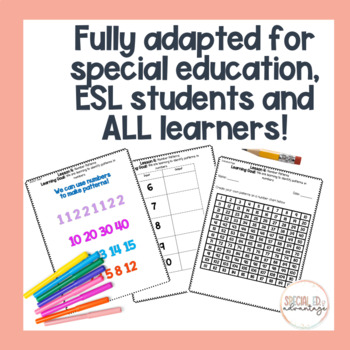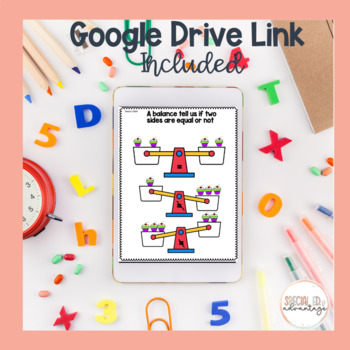FULL Year Units Grade 1 Ontario Math Adapted for Special Ed and ESL
The Special Ed Advantage
408 Followers
Grade Levels
1st
Subjects
Resource Type
Standards
CCSS1.MD.A.1
CCSS1.MD.A.2
CCSS1.MD.B.3
CCSS1.MD.C.4
CCSS1.NBT.A.1
Formats Included
- Zip
- Google Apps™
Pages
500+
The Special Ed Advantage
408 Followers

Includes Google Apps™
This bundle contains one or more resources with Google apps (e.g. docs, slides, etc.).
Products in this Bundle (6)
showing 1-5 of 6 products
Description
This is a FULL year of units adapted for students on the autism spectrum, ESL students or general special education classes.
*There is a link on the PDF to a Google Drive version to use with your hybrid students*
Each Unit Includes:
1- Baseline Data
2- Lesson Plans
3- Anchor Charts
4- Partner Activities
5- Individual Activities
6- Assessments (Conversation, Observation, Product)
7- Rubrics
I can't wait for you to use this unit with your students!
Follow me on socials if you'd like to connect
Instagram: @specialed.advantage
Other Math Resources: Algebra Worksheets for Grade 1
Follow me on TPT for more resources!!
Fab @ Special Ed Advantage
Total Pages
500+
Answer Key
N/A
Teaching Duration
1 Year
Report this resource to TPT
Reported resources will be reviewed by our team. Report this resource to let us know if this resource violates TPT’s content guidelines.
Standards
to see state-specific standards (only available in the US).
CCSS1.MD.A.1
Order three objects by length; compare the lengths of two objects indirectly by using a third object.
CCSS1.MD.A.2
Express the length of an object as a whole number of length units, by laying multiple copies of a shorter object (the length unit) end to end; understand that the length measurement of an object is the number of same-size length units that span it with no gaps or overlaps.
CCSS1.MD.B.3
Tell and write time in hours and half-hours using analog and digital clocks.
CCSS1.MD.C.4
Organize, represent, and interpret data with up to three categories; ask and answer questions about the total number of data points, how many in each category, and how many more or less are in one category than in another.
CCSS1.NBT.A.1
Count to 120, starting at any number less than 120. In this range, read and write numerals and represent a number of objects with a written numeral.




